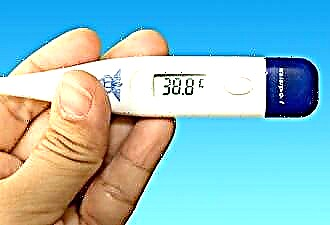 If during the microbiological analysis it turns out that the papillomas are oncogenic, the patient will be prescribed surgical treatment.
If during the microbiological analysis it turns out that the papillomas are oncogenic, the patient will be prescribed surgical treatment.
Surgical intervention is one of the palliative methods of treating papillomatosis, since it does not interfere with the development of the causative agent of the infection.
However, untimely removal of growths in the upper airways often leads to stenosis and hypoxia. The method of removing fibroepithelial tumors largely depends on their location, number and degree of oncogenicity.
Can papilloma be removed?
Surgical treatment of papillomatosis is carried out if the tumors were caused by the development of a papilloma virus of high carcinogenic risk. Accurately establish the degree of malignancy of neoplasms allows histological analysis, which is carried out during the examination of the patient by the otolaryngologist. The operation allows you to clear the mucous membrane of the airways from growths that prevent normal breathing.
It should be noted that the effectiveness of treatment also depends on the success of anti-relapse therapy. If, after excision of the tumor, at least a few atypical cells, prone to independent division, remain in the tissues of the throat, the growths arise again. Antiviral and immunostimulating drugs that inhibit the reproduction of the papillomavirus help prevent their development.
Important! Do not freeze a tumor with liquid nitrogen if it contains atypical cancer cells.
Before using one of the methods of surgical removal of papillomas, it is necessary to accurately determine the cytology of the pathological focus. Some methods of treating papillomatosis cannot be used if the neoplasms have appeared as a result of the development of a virus with a high degree of carcinogenicity. This can only provoke the proliferation of pathological tissues, which will lead to pharyngeal stenosis and suffocation.
Treatment methods
Can papillomatosis of the larynx be eliminated? Treatment of papillomas allows you to achieve long-term remission, however, it is almost impossible to completely eliminate the papillomavirus from the body. Interferon therapy, which is carried out after the surgical removal of growths, inhibits the reproductive activity of the virus. However, the risk of re-proliferation of the basal layer of the transitional epithelium still persists.
Surgical treatment of the disease is conventionally divided into two types:
- intralaryngeal - removal of neoplasms with laryngeal instrumentation under the control of a laryngeal speculum; it is used to treat patients aged 8-10 years;
- extralaryngeal - during surgery, laryngofissure (longitudinal dissection of the throat wall) and tracheotomy (dissection of the trachea in order to insert a metal cannula into the throat) are performed; extralaryngeal surgeries are performed only with shortness of breath and a high risk of asphyxia.
There are several endolaryngeal methods for removing benign neoplasms in the upper respiratory system. Some of the most effective of these are:
- laser coagulation;
- cryodestruction;
- radio wave therapy;
- electrocoagulation;
- ultrasonic disintegration;
- excision with a surgical scalpel.
Important! Mechanical removal of papillomas with a scalpel is contraindicated in the presence of inflammatory reactions in the mucous membrane of the oropharynx.
Each of the above methods has its own advantages and some disadvantages. To understand which of the methods of removing fibroepithelial tumors is the safest, it is worth considering each of them in more detail.
Laser coagulation
How to treat papillomas in the larynx? Laser therapy is used to remove multiple tumors in the throat. A defocused laser beam is directed at the papilloma, which leads to the destruction of pathological tissues and evaporation of growths. During therapy, there is an immediate thrombosis of the capillaries, which prevents serious blood loss.
The clear advantages of laser therapy are:
- painlessness of the procedure;
- fast healing of mucous membranes;
- absence of scars after epithelial regeneration;
- low risk of infection of the operated tissues.
Laser destruction of benign tumors is performed if the size of the neoplasms does not exceed 5-7 mm. The procedure is performed under local anesthesia and immediately after removal of the papillomas, the patient is allowed to go home.
To prevent damage to the operated tissues, the patient must follow a diet for 7-8 days, which involves the use of only liquid food.
Contraindications to the use of laser therapy are:
- period of gestation and lactation;
- feverish conditions;
- mental disorders;
- exacerbation of chronic diseases;
- diabetes.
Important! It is undesirable to visit the sauna for 14 days after surgical treatment, as this can lead to expansion of capillaries and bleeding.
Cryodestruction
Cryodestruction - burning out benign neoplasms with liquid nitrogen. Deep freezing of pathological tissues leads to the destruction of papillomavirus DNA, which reduces the risk of re-proliferation of papillomas. After local treatment of tumors with liquid nitrogen, rejection of the treated tissues is observed, as a result of which the growths disappear on their own within 7-8 days after therapy.
The advantages of cryotherapy include:
- painlessness of the procedure;
- no need to use anesthesia;
- fast regeneration of treated tissues;
- well tolerated by patients of almost any age group.
It should be noted that cryotherapy is used only in the presence of a small number of neoplasms in the larynx. After therapy, scar tissue may form at the site of the tumor, therefore, liquid nitrogen freezing is not used to remove papillomas on the vocal cords. In addition, it is highly undesirable to resort to cryodestruction to remove neoplasms prone to malignancy.
This method of treating papillomatosis has a number of contraindications, namely:
- oncological diseases;
- hypersensitivity to low temperatures;
- exacerbation of infectious processes in the ENT organs.
One of the key disadvantages of cryotherapy is the impossibility of 100% control over the degree of tissue freezing. Insufficient freezing of the papilloma increases the risk of re-proliferation of epithelial tissues, too strong - the formation of scars on the laryngeal mucosa.
Radio wave therapy
The radio wave method of excision of fibroepithelial tissue is one of the most effective and safe ways to remove papillomas. The essence of the method consists in supplying radio waves of various ranges to the metal end of the electrode, which is inserted into the patient's larynx. The electrode is directed to the places of localization of tumors, where, under the influence of the radio wave field, the destruction (evaporation) of pathological tissues occurs.
Depending on the size and location of the tumors, the specialist sets the necessary parameters for the power of the radio wave signal. Thus, the degree of "pressure" of the radio knife is controlled, due to which it is possible to excise tumors of almost any size.During the procedure, the electrode itself does not come into contact with soft tissues, which reduces the risk of infection of the operated mucous membranes.
Radio wave treatment has several important advantages in comparison with other methods of surgical treatment of papillomatosis:
- low risk of tissue infection;
- no bleeding;
- the ability to remove papillomas of any size;
- fast recovery period;
- the possibility of excision of tumors in hard-to-reach places.
Important! Do not use a radio knife to remove neoplasms larger than 1 cm in diameter, as this can lead to bleeding.
After a couple of days, a scab forms at the site of the operated tissues, which disappears on its own within a week. Complete regeneration of the mucous epithelium is observed approximately 3 weeks after therapy. It is strongly not recommended to resort to the radio wave method of treating papillomatosis when:
- diabetes mellitus;
- cardiac stimulation;
- hepatitis;
- exacerbation of infectious processes;
- pulmonary heart disease.
For 5-7 days after therapy, it is advisable to gargle with a weak soda solution to prevent the development of bacterial flora.
Electrocoagulation
Electrocoagulation is the endolaryngeal method of removing viral neoplasms in the airways with high-frequency current. Under local anesthesia, a thin plastic handle with a metal loop at the end is inserted into the pharyngeal cavity through which current is passed. When papillomas are cut off, the surrounding tissue heats up, which increases the risk of burns. Therefore, electrocoagulation is used to remove small benign tumors.
During the operation, coagulation (soldering) of the vessels occurs, which prevents blood loss. In some cases, for the complete removal of papillomas, several therapy sessions are required. The advantages of the method include:
- the ability to remove up to 5 filiform papillomas in 1 session;
- no bleeding and quick healing of mucous membranes;
- the ability to send excised neoplasms for histological analysis;
- low likelihood of re-formation of papillomas in the operated areas.
During therapy, contact removal of tumors occurs in order to prevent tissue infection; after the procedure, the patient must use anti-inflammatory and disinfecting agents.
Scars on the mucous membranes of the ENT organs are extremely rare and only if the papilloma has penetrated into the deep layers of the epithelium. It is undesirable to resort to electrocautery in the presence of such contraindications:
- acute phase of somatic pathologies;
- oncological diseases;
- allergy to local anesthesia;
- inflammatory processes in the pharynx.
To reduce the risk of recurrence to a minimum, after therapy, patients should undergo a course of drug treatment with the use of immunostimulating agents.
Ultrasonic disintegration
What to do if a papilloma has formed in the throat? Treatment of fibroepithelial tumors that are not prone to malignancy is carried out using ultrasonic disintegration (US). The principle of therapy is based on the destruction of pathological tissues by an ultrasound waveguide, which is inserted into the patient's larynx.
In the process of removing papillomas, the destruction of "old" vessels that feed benign neoplasms is observed. After excision of tumors, the integrity of the network of blood capillaries is gradually restored. Ultrasonic removal of growths on the walls of the larynx can be compared with the radio wave method. The only difference is that high-frequency ultrasound is used to kill the overgrown epithelium.
 In comparison with mechanical removal of papillomas with a scalpel, ultrasound has several important advantages:
In comparison with mechanical removal of papillomas with a scalpel, ultrasound has several important advantages:
- painlessness of the procedure;
- practical absence of tissue heating;
- quick restoration of the integrity of the mucous membranes;
- lack of cicatricial formations.
Ultrasound therapy has an anti-inflammatory and resorption effect, which greatly reduces the risk of re-formation of tumors in the throat. This method is used to treat not only adults, but also children over the age of 7 years.
Excision with a surgical scalpel
Surgical excision of benign tumors is a traditional treatment for papillomatosis. The operation is performed under local anesthesia, during which the growths in the throat are removed with a metal scalpel. Mechanical excision of papillomas is used if the tumors are large and interfere with normal breathing.
The subsequent coagulation of the vessels, which is carried out with the help of a laser, allows the prevention of blood loss. As a rule, after surgery, the operated tissues take a long time to heal. To speed up the healing process, the patient is prescribed analgesic, antiphlogistic and decongestant drugs. Painful sensations disappear approximately 6-7 days after the procedure with partial healing of the laryngeal mucosa.
It is not recommended to resort to surgical treatment of papillomatosis when:
- hyperthermia;
- febrile conditions;
- septic sore throat;
- intolerance to local anesthetics.
Mechanical removal of papillomas is advisable to carry out with the rapid progression of tumors. Intra-laryngeal operations are performed using an orthoscope and fluoroscopy.

 Important! Do not use a radio knife to remove neoplasms larger than 1 cm in diameter, as this can lead to bleeding.
Important! Do not use a radio knife to remove neoplasms larger than 1 cm in diameter, as this can lead to bleeding.

